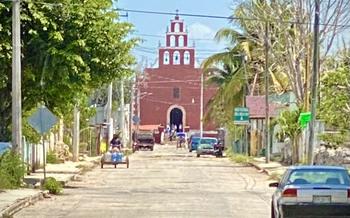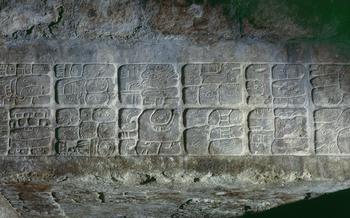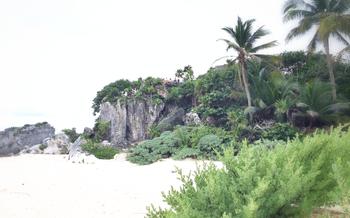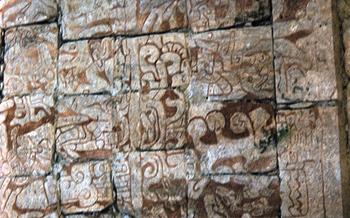
Cenote Zacil Ha
- Cenote Zacil Ha: An Oasis in the Heart of Tulum
- Unveiling the Beauty: What to Expect from Cenote Zacil Ha
- Geological Characteristics
- Unique Features
- Best Time to Visit
- Name and Discovery
- Sunbathing and Relaxation: Lounging by the Cenote's Edge
- Exploring the Surroundings: Cenotes and Attractions Nearby
- Sustainable Tourism: Protecting Cenote Zacil Ha
- Unforgettable Dining: Restaurants Near Cenote Zacil Ha
- Cultural Immersion: Mayan Traditions and History
- Accommodation Options: Where to Stay Near Cenote Zacil Ha
- Budget-Friendly Tips: Exploring Cenote Zacil Ha on a Shoestring
- Solo Travel: Embracing Cenote Zacil Ha as a Solo Traveler
- Family-Friendly Fun: Cenote Zacil Ha for Families
Cenote Zacil Ha: An Oasis in the Heart of Tulum
Cenotes are natural wonders found on the Yucatan Peninsula in Mexico. These sinkholes are formed when the limestone bedrock collapses, exposing the groundwater underneath. The water in cenotes is typically crystal clear and refreshing, making them a popular spot for swimming, snorkeling, and diving.
Cenote Zacil Ha is one of the most popular cenotes in Tulum. It is located just a short drive from the city center and is easily accessible by car or taxi. The cenote is surrounded by lush vegetation and has a stunning blue lagoon that is perfect for swimming. There are also a number of platforms and ladders that allow visitors to easily enter and exit the water.
To get to Cenote Zacil Ha from Cancun, you can take a bus or taxi. The journey takes about two hours. From Playa del Carmen, you can take a bus or taxi that will take about an hour.
One of the best ways to experience Cenote Zacil Ha is to go for a swim. The water is crystal clear and refreshing, and there are plenty of fish and other aquatic life to see. You can also rent snorkeling gear at the cenote or bring your own.
According to Mayan legend, Cenote Zacil Ha was a sacred place where the Mayans would come to bathe and pray. The cenote is also said to be home to a number of spirits, including a beautiful mermaid.
Unveiling the Beauty: What to Expect from Cenote Zacil Ha
Geological Characteristics
Cenote Zacil Ha is a geological wonder formed by the collapse of a limestone bedrock, exposing the groundwater beneath. The cenote's circular shape and sheer cliffs are a testament to the power of natural erosion. Its depth reaches an impressive 30 meters, inviting visitors to dive into its crystal-clear waters.
Unique Features
What sets Cenote Zacil Ha apart is its breathtaking beauty. The water shimmers in various shades of blue, reflecting the lush vegetation that surrounds the cenote. The walls are adorned with intricate rock formations, creating a mesmerizing underwater landscape. The cenote is also home to a diverse array of aquatic life, including colorful fish, turtles, and the occasional crocodile.
Best Time to Visit
To experience Cenote Zacil Ha at its best, plan your visit during the dry season, which runs from November to April. During this time, the weather is sunny with minimal rainfall, ensuring optimal visibility for swimming and snorkeling. The cenote is less crowded during this period, allowing you to enjoy a tranquil and serene atmosphere.
Name and Discovery
The name "Zacil Ha" means "clear water" in the Mayan language, a fitting description for this pristine cenote. According to local legends, the cenote was discovered by a group of Mayan hunters who were following a deer that had escaped into the jungle. They stumbled upon the hidden oasis and were amazed by its beauty, believing it to be a sacred place.
Sunbathing and Relaxation: Lounging by the Cenote's Edge
Basking in the warmth of the sun and immersing yourself in the serene atmosphere of Cenote Zacil Ha is an experience that rejuvenates both body and mind. Designated areas around the cenote offer ample space for sunbathing, allowing you to soak up the tropical sunshine and relax amidst the natural beauty. Lounge chairs or hammocks are available for your comfort, inviting you to unwind and embrace the tranquility of the surroundings. Remember to apply sunscreen regularly to protect your skin from the sun's rays, and wear a hat and sunglasses to shield your eyes from the glare. I recall an afternoon spent sunbathing by the cenote, where the gentle breeze rustled through the leaves of the surrounding trees, creating a symphony of soothing sounds. As I lay there, gazing up at the clear blue sky, I felt a profound sense of peace and relaxation wash over me, leaving me refreshed and revitalized.
Exploring the Surroundings: Cenotes and Attractions Nearby
Cenote Zacil Ha is surrounded by a myriad of otherworldly cenotes, each possessing its own unique charm. For an adventurous exploration, venture to Cenote Azul, renowned for its striking sapphire waters and mesmerizing underwater caves. Cenote Dos Ojos beckons with its crystal-clear waters, perfect for snorkeling and diving enthusiasts. History buffs can delve into the past at the ancient Mayan ruins, remnants of a civilization that once thrived in this region.
To embark on this journey of discovery, consider renting a bike for a leisurely ride through the lush countryside, immersing yourself in the beauty of the natural surroundings. Alternatively, guided tours are available, providing insightful commentary and transportation to multiple cenotes, ensuring a comprehensive and hassle-free experience.
During my exploration of the surrounding cenotes, I stumbled upon a hidden gem nestled amidst the jungle. Aktun Chen emerged as a true paradise, with its pristine waters and awe-inspiring rock formations. Sharing this secret spot with fellow travelers, we reveled in the tranquility and beauty of this secluded oasis.
Sustainable Tourism: Protecting Cenote Zacil Ha
Cenote Zacil Ha, like many natural wonders, is vulnerable to the impact of tourism. The influx of visitors can lead to water pollution, damage to the delicate ecosystem, and disruption of the natural habitat. To ensure the long-term sustainability of this unique destination, it is crucial for tourists to adopt responsible practices.
Avoiding the use of harsh chemicals, such as sunscreen and insect repellent, is essential to protect the cenote's water quality. Additionally, respecting designated trails and swimming areas helps minimize damage to the surrounding vegetation and wildlife.
Supporting local conservation initiatives is another way to contribute to the preservation of Cenote Zacil Ha. These initiatives often focus on reducing waste, promoting sustainable tourism practices, and educating visitors about the importance of conservation.
By embracing sustainable tourism, travelers can help protect the beauty and tranquility of Cenote Zacil Ha for generations to come.
Personal Anecdote:
During my visit to Cenote Zacil Ha, I had the opportunity to participate in a clean-up activity organized by a local conservation group. Together with other volunteers, we removed plastic bottles, cans, and other debris from the cenote and its surroundings. It was a rewarding experience to contribute to the preservation of this natural wonder and to raise awareness about the importance of sustainable tourism.
Unforgettable Dining: Restaurants Near Cenote Zacil Ha
Indulge in the tantalizing flavors of Yucatecan cuisine, a culinary symphony that blends Mayan traditions with Spanish influences. Savor the succulent cochinita pibil, slow-roasted pork marinated in achiote paste and wrapped in banana leaves, a dish that embodies the region's rich culinary heritage. Delight in panuchos, a local favorite consisting of fried tortillas topped with refried beans, shredded turkey, and a tangy tomato sauce.
Venture beyond the cenote's immediate vicinity to discover a culinary haven of restaurants that cater to diverse tastes. From traditional Mayan eateries to international fusion cuisine, there's something to satisfy every palate. Immerse yourself in the vibrant atmosphere of local markets, where you can sample fresh seafood, tropical fruits, and handmade tortillas while interacting with friendly vendors.
Before embarking on your culinary adventure, consider making reservations at popular restaurants to avoid disappointment. Be sure to communicate any dietary restrictions or preferences to ensure a seamless dining experience. Embrace the opportunity to engage with the locals, who will gladly share their culinary insights and guide you toward hidden gastronomic gems.
Cultural Immersion: Mayan Traditions and History
The Yucatán Peninsula is steeped in the rich cultural heritage of the ancient Maya civilization, and Tulum is no exception. Immerse yourself in the vibrant traditions and fascinating history of the Maya people by visiting nearby Mayan ruins, such as the iconic Chichén Itzá or the lesser-known but equally impressive Cobá. Explore ancient temples, climb towering pyramids, and learn about the sophisticated civilization that once thrived in this region.
Participate in cultural events and workshops to gain a deeper understanding of Maya culture. Attend traditional ceremonies, watch folk dance performances, or take part in cooking classes to learn how to prepare delicious Mayan dishes. Engage with local Maya communities to hear their stories, learn about their customs, and gain a glimpse into their way of life.
By embracing the cultural immersion opportunities in Tulum, you'll not only enhance your travel experience but also contribute to the preservation and appreciation of the rich Mayan heritage that continues to shape the identity of this region.
Accommodation Options: Where to Stay Near Cenote Zacil Ha
When planning your trip to Cenote Zacil Ha, choosing the right accommodation is crucial. The area offers diverse options ranging from budget-friendly hostels to luxurious resorts. For a truly immersive experience, consider staying in a traditional Mayan-style cabana or a cozy bed and breakfast. These accommodations often provide unique insights into the local culture and lifestyle.
If you seek a convenient and comfortable stay, opt for hotels or guesthouses located within walking distance of the cenote. These establishments typically offer amenities like swimming pools, restaurants, and tour services. For a more secluded and private experience, consider renting a villa or apartment in the surrounding area.
To make the most of your stay, book your accommodation in advance, especially during peak season. Consider your budget, comfort preferences, and proximity to the cenote when making your choice. Whether you prefer a rustic charm or modern amenities, there's an ideal accommodation option waiting for you near Cenote Zacil Ha.
Anecdote:
During my first visit to Cenote Zacil Ha, I opted for a charming bed and breakfast nestled amidst lush tropical gardens. The hosts were incredibly welcoming and shared fascinating stories about the cenote and the surrounding area. The traditional Mayan-style room added an authentic touch to my stay, making the experience truly unforgettable.
Budget-Friendly Tips: Exploring Cenote Zacil Ha on a Shoestring
Exploring Cenote Zacil Ha on a budget is entirely possible with a bit of planning and creativity. Begin by utilizing local transportation options such as buses or colectivos, which are not only affordable but also offer an authentic travel experience. Dine at local markets or smaller restaurants to savor delicious Yucatecan cuisine at a fraction of the cost of touristy spots. Consider staying at hostels or guesthouses instead of hotels for budget-friendly accommodation options. Plan your visit during the shoulder season (May-June and September-October) to avoid peak season prices. Take advantage of free or low-cost activities like swimming, sunbathing, and hiking in the surrounding jungle. Remember, sometimes the most enriching experiences come from embracing the local way of life and exploring off the beaten path.
Solo Travel: Embracing Cenote Zacil Ha as a Solo Traveler
Venturing into Cenote Zacil Ha as a solo traveler can be an enriching and fulfilling experience. Embrace the freedom to explore at your own pace, immersing yourself in the tranquility of the cenote's natural beauty. Connect with like-minded individuals at hostels or join organized group tours to make new friends and share unforgettable moments. Utilize online resources and forums dedicated to solo travelers to gather valuable tips and recommendations. Remember, safety is paramount, so choose well-lit paths, inform someone about your itinerary, and stay connected with friends or family. Embrace the opportunity to meet new people, engage in meaningful conversations, and create lasting memories during your solo adventure at Cenote Zacil Ha.
Family-Friendly Fun: Cenote Zacil Ha for Families
Traveling with family presents unique challenges and opportunities, and Cenote Zacil Ha offers a perfect blend of adventure, education, and fun for families of all ages. The crystal-clear waters and shallow areas make it safe for children to swim and snorkel, while the stunning scenery and diverse wildlife provide ample opportunities for exploration and learning. Guided tours are available for families who want to learn more about the cenote's history and geology, and snorkeling lessons can be arranged for those who want to get up close and personal with the underwater world.
For a memorable family experience, pack a picnic lunch and enjoy it at one of the designated picnic areas surrounding the cenote. The lush vegetation provides shade from the sun, and the tranquil atmosphere creates a perfect setting for bonding and creating lasting memories. Life jackets and changing rooms are available for added convenience, ensuring a comfortable and safe experience for everyone.
If traveling with younger children, consider hiring a babysitter for a few hours to allow parents to enjoy some alone time exploring the cenote or relaxing by the water's edge. This can provide a much-needed break for parents and ensure that everyone has a chance to make the most of their visit to this magical place.









